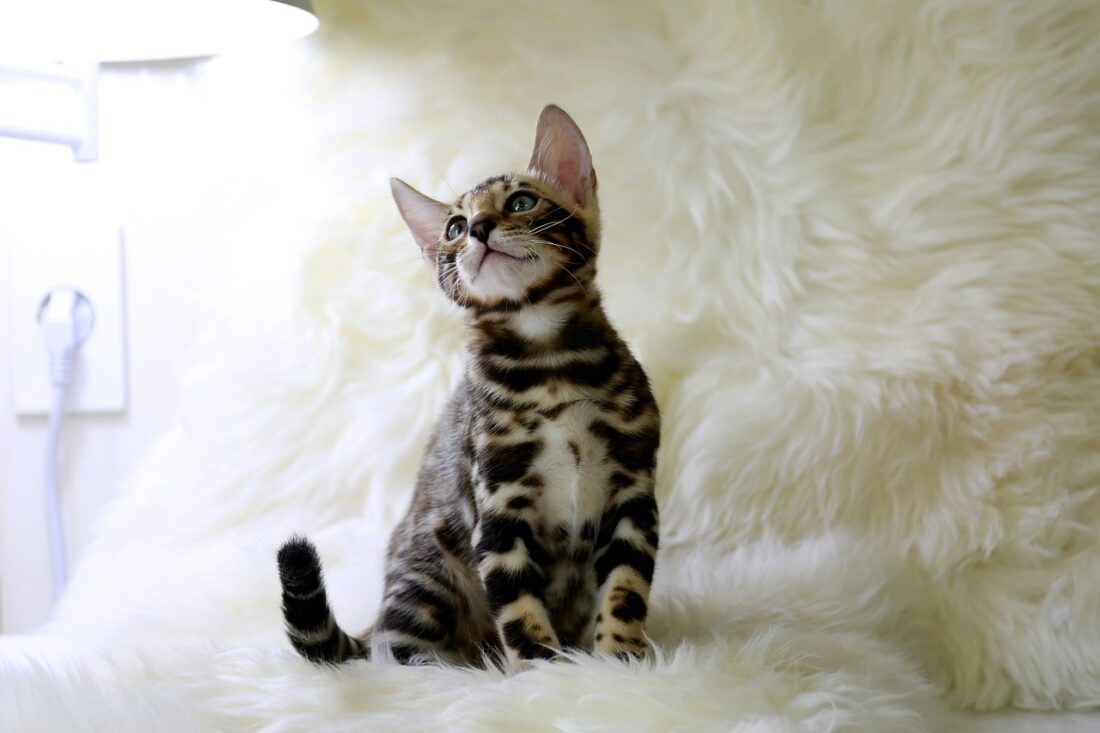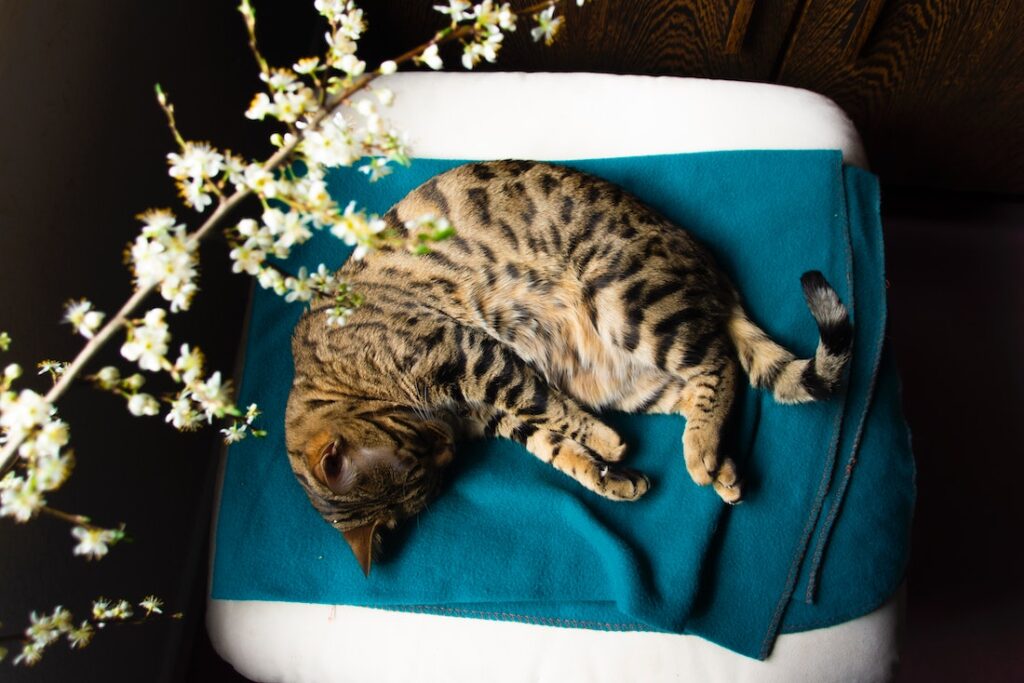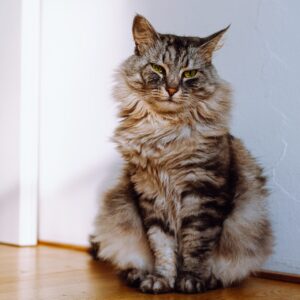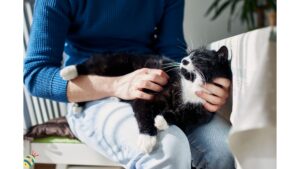Cats are admirable pets to keep in the house. However, it’s highly annoying to find cat fur littered on the couch, carpet, or bed.
Thus, many homeowners strive to find a cat breed that doesn’t shed fur. And hence, the question; Do Bengal cats shed?
Thus, Do Bengal Cats Shed?
Cats undergo shedding of fur. And the Bengal cat is no different. But, most cats with long hair experience a higher degree of shedding than those with short coats.
Bengal Cats shed fur but to a minimal degree. And when you compare their shedding habits to other cats, Bengal seems to shed almost no hair.
However, there are instances when their shedding gets significant and becomes a concern.
And that’s the purpose of this post; to educate you on whether Bengal’s shed or not.
Instances When a Bengal Cat Sheds a Significant Amount of Fur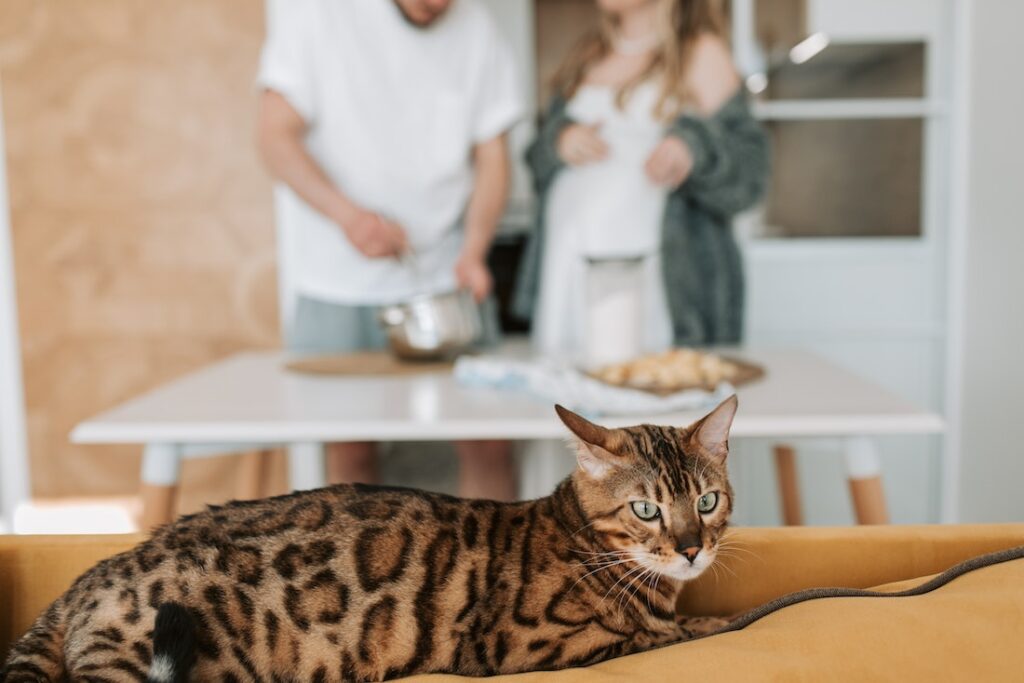
Transitioning Into Maturity
As kittens, Bengals have soft and fuzzy fur that keeps them warm. However, they don’t maintain such kitten fur into adulthood.
As they approach maturity (about 7 to 9 months), they experience developmental shedding. That’s when the kitten fur gives way to the smooth pelt-like adult coat. During that period, the fur color changes too.
And by the time the cat attains two or one and a half years, the Bengal has acquired adult-quality fur and color.
High Level of Stress
Besides developmental shedding, a high level of stress causes significant fur loss in Bengal. Various factors can induce anxiety in a cat.
For instance, moving to a new apartment is a prime cause of stress. It may take a cat a couple of days to accept the new environment or cattery.
Furthermore, when you bring in a new kitten, puppy, or any other pet, your cat may experience stress. Other factors include neglect, high noise intensity, and fear.
Often a stressed cat resorts to an extra-long grooming period. As a result, the pet develops bald patches on the skin.
Lack of Proper Diet
Besides grooming, a proper diet helps a cat develop healthy skin and coat. When your Bengal friend doesn’t get the vital nutrients, the pet may register a noticeable loss in fur in the long run.
The pets’ diet, therefore, should have minerals, proteins, and vitamins. Also, minimize the amount of processed food you feed the cat.
Often poor diet leads to the following;
- Weak fur roots
- Obesity
- Gastrointestinal related problems
Parasite Infestation
A heavy infestation of ticks, mites, or fleas causes discomfort to a cat. As a result, the pet might resort to severe scrubbing.
In addition, the heavy presence of parasites may stress the animal. And if you don’t fight the parasites, your cat may suffer a high level of shedding.
Change in Season
A change in season means the prevailing temperature also changes. During winter, hairy animals grow thick coats to brave the cold season.
And then winter gives in to spring and summer, the reverse takes place. The pets undergo excessive shedding so that they match high temperatures.
Cats are no different to change in seasons. However, Bengal cats have only a single coat layer, unlike the Norwegian forest cat that has an undercoat too.
Thus only Bengal cats living in the northern part of the globe experience a dramatic loss in fur due to changes in season.
Underlying Health Issues
Unresolved health issues with your cat can also lead to excessive shedding. When that happens, besides losing clumps of hair, you may notice unusual behavior in your pet.
The most common health issues include bacterial or fungal infections. Others are kidney diseases, cancer, and liver complications.
Allergies
Like a human being, a cat can also be allergic to a particular substance or food. Hence when the animal ingests or comes into contact with such allergens, it registers discomfort.
To soothe the discomfort, the animal then takes to biting, excessive scrubbing, and licking the coat. And that can cause the loss of a high volume of hair.
Most cat allergens include eggs, dairy products, and some grains.
How Do You Manage the Shedding in Bengal?
You can’t stop a cat from shedding. But here are a few tips on how you can reduce the shedding to a manageable level;
- Subscribe to a proper diet. Ensure the Bengal’s diet is rich in protein plus other vital nutrients.
- Regular brushing. Besides a cat’s self-grooming, chip in with an extra brushing hand. That way you eliminate loose hair and prevent the formation of hairballs.
- Don’t bathe your cat more than necessary. Frequent washing of the cat reduces the oil on the skin. In the end, it causes hair loss. Washing the cat once every two weeks isn’t bad.
FAQs
Are Bengal Cats Really Hypoallergenic?
Bengal cats aren’t truly hypoallergenic as they shed a little amount of fur. Hence the cat breed has a minimal chance of causing an allergic reaction.
Do Bengal Cats Require High Maintenance?
Bengal cats require a relatively high degree of maintenance in terms of attention and time. The cat breed makes a strong bond with her master and other family members. That means most often the animal requires your attention.
Conclusion
Most cats shed, including the Bengal species. But in normal circumstances, the cat doesn’t shed a noticeable amount of fur.
That’s why some people tend to think that Bengal doesn’t shed. Nevertheless, other factors can cause the cat species to lose significant fur volume.
The chief factors include stress, poor diet, parasite infestation, or change of dwelling place. So, if you own a Bengal cat, keep watch over her shedding trend.

